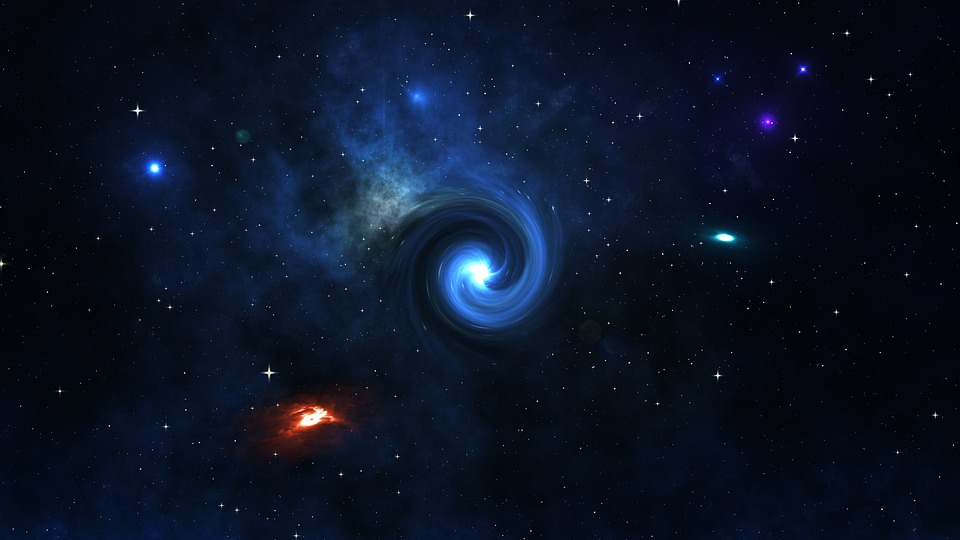Since 2015, astronomers have tried to figure out whether or not the mysterious Planet Nine exists, having said to also be orbiting the Sun beyond the icy Pluto. A new theory suggests that Planet Nine may not actually be a planet, but rather something else entirely.
Astronomers from Harvard University and the Black Hole Initiative have theorized that the mysterious Planet Nine may actually be a primordial black hole. In a study accepted in the Astrophysical Journal Letters, it notes the Legacy Survey of Space and Time mission’s capability to observe the accretion flares. Accretion flares come from the disruption of comets that are intercepted by the gravitational pull of a black hole.
“In the vicinity of a black hole, small bodies that approach it will melt as a result of heating from the background accretion of gas from the interstellar medium onto the black hole,” said Harvard student Amir Siraj.
As black holes are invisible to the naked eye, astronomers have to resort to other methods in detecting a black hole, such as scanning for radiation signatures. In this study, the scientists have to look for the radiation produced by matter that is getting sucked into a black hole. They would have to apply the same method to Planet Nine to prove their theory.
“This method can detect or rule out trapped planet-mass black holes out to the edge of the Oort Cloud, or about a hundred thousand astronomical units. It could be capable of placing new limits on the fraction of dark matter contained in primordial black holes,” said Mr. Siraj.
Last week, a large fireball exploded over the skies of Japan as a meteor went past the Earth’s atmosphere at a speed of 54,000 kilometers per hour. The meteor was seen over Tokyo, and many residents took videos and photos of the incident, with reports soon flooding into the International Meteor Organization or IMO.
The IMO revealed that the impact of the blast of the fireball over Japan was equivalent to 150 TNT. Asteroids and meteors produce a bright explosion once they come into contact with the atmosphere as it would be the first time it would meet resistance.



 NASA Resumes Cygnus XL Cargo Docking with Space Station After Software Fix
NASA Resumes Cygnus XL Cargo Docking with Space Station After Software Fix  Lab-grown meat: you may find it icky, but it could drive forward medical research
Lab-grown meat: you may find it icky, but it could drive forward medical research  SpaceX’s Starship Completes 11th Test Flight, Paving Way for Moon and Mars Missions
SpaceX’s Starship Completes 11th Test Flight, Paving Way for Moon and Mars Missions  SpaceX Starship Explodes in Texas During Test, Citing Nitrogen Tank Failure
SpaceX Starship Explodes in Texas During Test, Citing Nitrogen Tank Failure  Eli Lilly’s Inluriyo Gains FDA Approval for Advanced Breast Cancer Treatment
Eli Lilly’s Inluriyo Gains FDA Approval for Advanced Breast Cancer Treatment  Is space worth the cost? Accounting experts say its value can’t be found in spreadsheets
Is space worth the cost? Accounting experts say its value can’t be found in spreadsheets  Trump Signs Executive Order to Boost AI Research in Childhood Cancer
Trump Signs Executive Order to Boost AI Research in Childhood Cancer  Tabletop particle accelerator could transform medicine and materials science
Tabletop particle accelerator could transform medicine and materials science  Astronomers have discovered another puzzling interstellar object − this third one is big, bright and fast
Astronomers have discovered another puzzling interstellar object − this third one is big, bright and fast  Neuren Pharmaceuticals Surges on U.S. Patent Win for Rare Disorder Drug
Neuren Pharmaceuticals Surges on U.S. Patent Win for Rare Disorder Drug  Kennedy Sets September Deadline to Uncover Autism Causes Amid Controversy
Kennedy Sets September Deadline to Uncover Autism Causes Amid Controversy  CDC Vaccine Review Sparks Controversy Over Thimerosal Study Citation
CDC Vaccine Review Sparks Controversy Over Thimerosal Study Citation  FDA Adds Fatal Risk Warning to J&J and Legend Biotech’s Carvykti Cancer Therapy
FDA Adds Fatal Risk Warning to J&J and Legend Biotech’s Carvykti Cancer Therapy  Trump Administration to Launch Autism Initiatives Targeting Acetaminophen Use and New Treatment Options
Trump Administration to Launch Autism Initiatives Targeting Acetaminophen Use and New Treatment Options 































